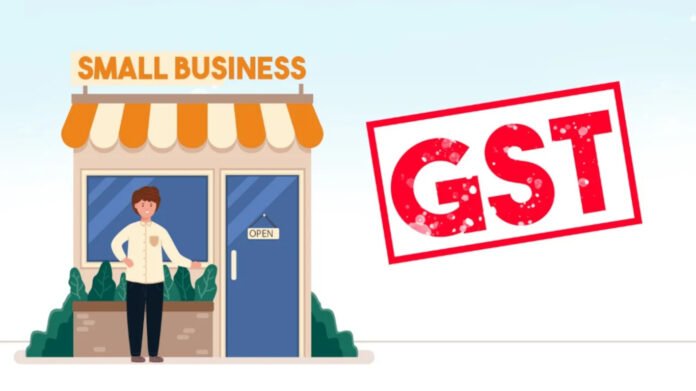India’s 56th GST Council has cleared a sweeping overhaul that trims the rate structure to two standard slabs — 5% and 18% — with a separate 40% rate for sin and luxury goods, effective September 22, 2025. For businesses, this is not just a price tweak: it is a structural change designed to simplify compliance, cut input costs, unblock cash flows, and lift demand across key sectors.
The Council also reduced taxes on hundreds of consumer items, lowered GST on small cars and sub-350cc two-wheelers to 18%, and exempted life and health insurance premiums from GST. This package brings immediate and tangible effects on household budgets and corporate planning alike.
A Cleaner Rate Structure That Reduces Friction
Moving from four slabs (5%, 12%, 18%, 28%) to two (5% and 18%) collapses grey zones and cuts classification disputes that used to consume time and resources. Fewer bands mean simpler pricing, easier invoicing, and clearer IT systems. Businesses can budget with greater confidence, especially for pan-India product lines. The 40% band ring-fences genuinely sin and super-luxury consumption, preserving the simplicity of the mainstream structure.
Demand Tailwinds from Price Cuts on Everyday Goods
With toiletries and household staples shifting lower, such as toothpaste and shampoo moving to 5% from 18%, FMCG and retail players are likely to see price-led volume gains. Distributors benefit from smoother throughput. Promotional strategies may reset as brands pass on tax efficiencies to consumers ahead of the festive season.
Auto and Two-Wheeler Boost: Affordability Meets Festive Timing
The cut from 28% to 18% on small cars and motorcycles up to 350cc materially lowers on-road prices, improving affordability for first-time buyers and fleet refreshes. Dealers gain a wider price band for offers, while ancillaries such as tyres and lubricants enjoy second-order demand. With the changes arriving ahead of Navratri and Diwali, the conversion effect is amplified, particularly in entry and commuter segments.
Insurance Exemption Frees HR Budgets and Expands Coverage
Making individual life and health insurance premiums GST-free eases the total cost of benefits for families and improves take-up of protection products. For employers, this reduces costs for group top-ups, wellness add-ons, and retention-linked benefits, potentially expanding coverage without raising budgets. Insurers also gain from cleaner product messaging with “no GST on premiums.”
Working Capital Relief: Faster Refunds and Quicker Onboarding
Compliance changes go beyond rates. The Council has shortened GST registration for non-risky businesses to about three days, introduced pre-filled return formats, and targeted a seven-day refund window for key export-oriented sectors. These measures unlock cash, cut administrative hours, and reduce uncertainty for MSMEs and exporters.
For exporters, quicker refunds translate into faster inventory turns and lower borrowing costs. The easing of low-value export consignments further smooths e-commerce shipments, improving liquidity predictability.
Hospitality Fillip: Simpler, Lower Levy at Mass Price Points
Room tariffs up to ₹7,500 per day now attract 5% without ITC (down from 12% with ITC). For mid-market hotels, this reduces front-end prices and streamlines rate cards for corporate travel desks and online booking platforms. While the absence of ITC may require procurement recalibration, headline affordability should lift occupancy and the events business outside peak seasons.
Lower Compliance Cost Leads to Better Margins and Sharper Execution
The two-slab regime enables ERP and billing teams to retire complex exception maps and reduce classification-linked reconciliations. Fewer disputes also shrink legal and litigation overheads. Industry groups have welcomed the predictability this brings to planning and pricing across supply chains.
Dispute Resolution Gets a Dedicated Track
The Council has approved operationalising the GST Appellate Tribunal (GSTAT), expected to accept appeals by the end of September and begin hearings by December 2025. A functioning tribunal will improve time-to-resolution, free up working capital stuck in disputes, and standardise interpretations across states — vital for nationwide businesses.
Sector-by-Sector Snapshot
FMCG and Retail: Input costs and output prices both benefit from the shift to 5% on many mass-use items. Higher unit sales and deeper rural reach are expected.
Automobiles and Ancillaries: 18% GST on small cars and motorcycles improves EMI affordability. Accessory and service revenues should rise with higher ownership.
Insurance and Healthcare: GST-free premiums make health and life cover more accessible. Insurers can pitch clearer and cheaper propositions, potentially widening penetration.
Exporters: Seven-day refunds and risk-based processing improve cash cycles. Smaller players in cross-border e-commerce gain from easier low-value refunds.
Hospitality: 5% without ITC at popular tariffs should lift occupancy, especially in price-sensitive leisure and corporate segments.
What to Watch in the Transition
Pricing pass-throughs: Benefits depend on timely price revisions and channel-wide implementation.
ITC planning for hospitality and services: With 5% without ITC for select hotel tariffs, procurement may shift towards cost-down sourcing rather than ITC optimisation.
Sin and luxury at 40%: Companies in carbonated drinks, tobacco, and high-end auto must re-plan price ladders and product mix. The benefit here is clarity and predictable planning even at elevated tax.
Systems and contracts: ERPs, long-term rate cards, and vendor contracts must be updated quickly to mirror new slabs effective September 22. Early preparation avoids billing disputes.
The Bottom Line for Businesses
The GST revamp simplifies the tax code, reduces compliance friction, and injects demand where it matters — mass-market consumption, affordable mobility, and basic financial protection. Paired with faster refunds and quicker onboarding, it releases working capital and frees teams from administration to focus on growth. Even where taxes rise (the 40% bucket), the trade-off is certainty and an uncluttered mainstream regime. For MSMEs in particular, the combination of lower rates on inputs and outputs, leaner filings, and quicker cash-backs provides a material competitive boost.
























